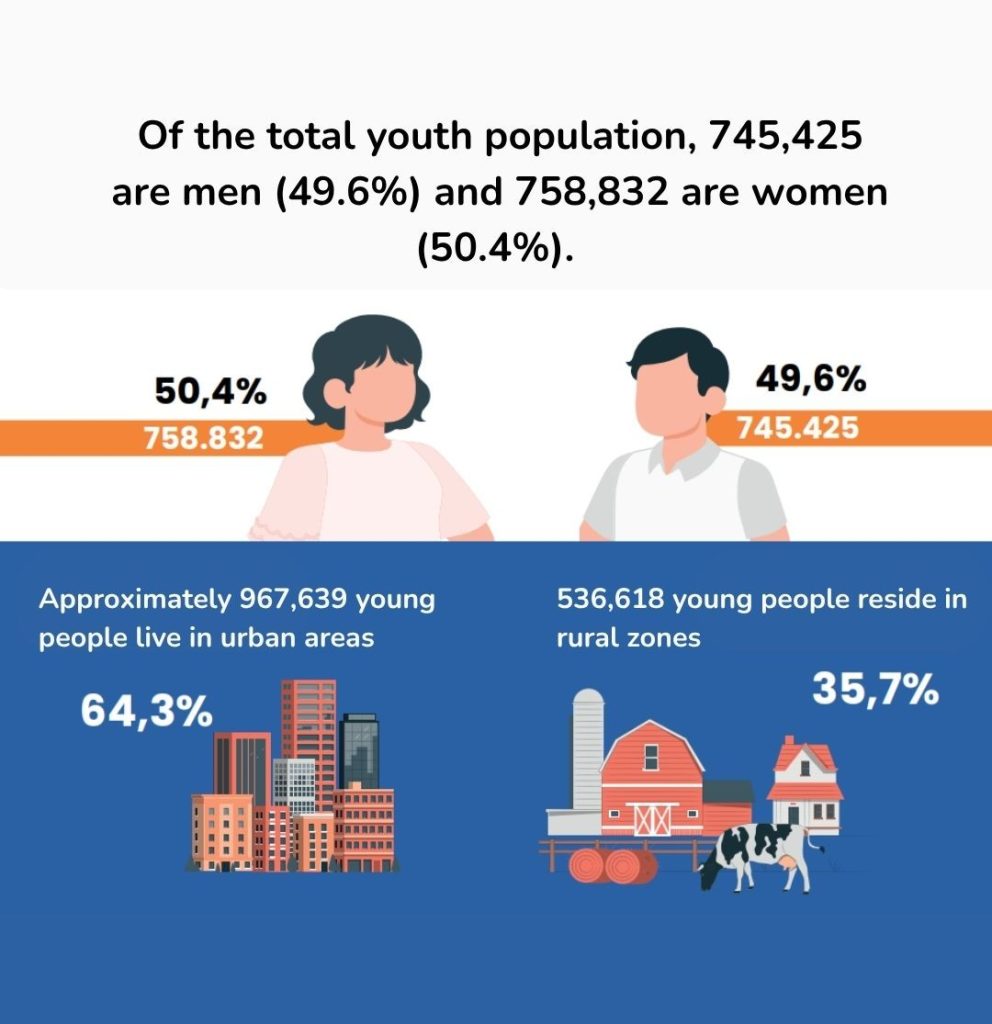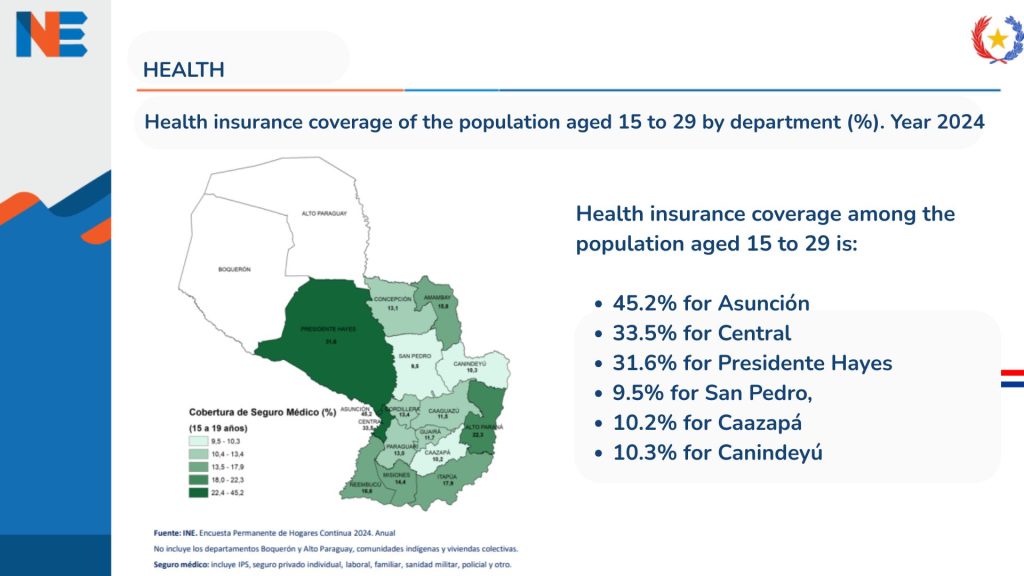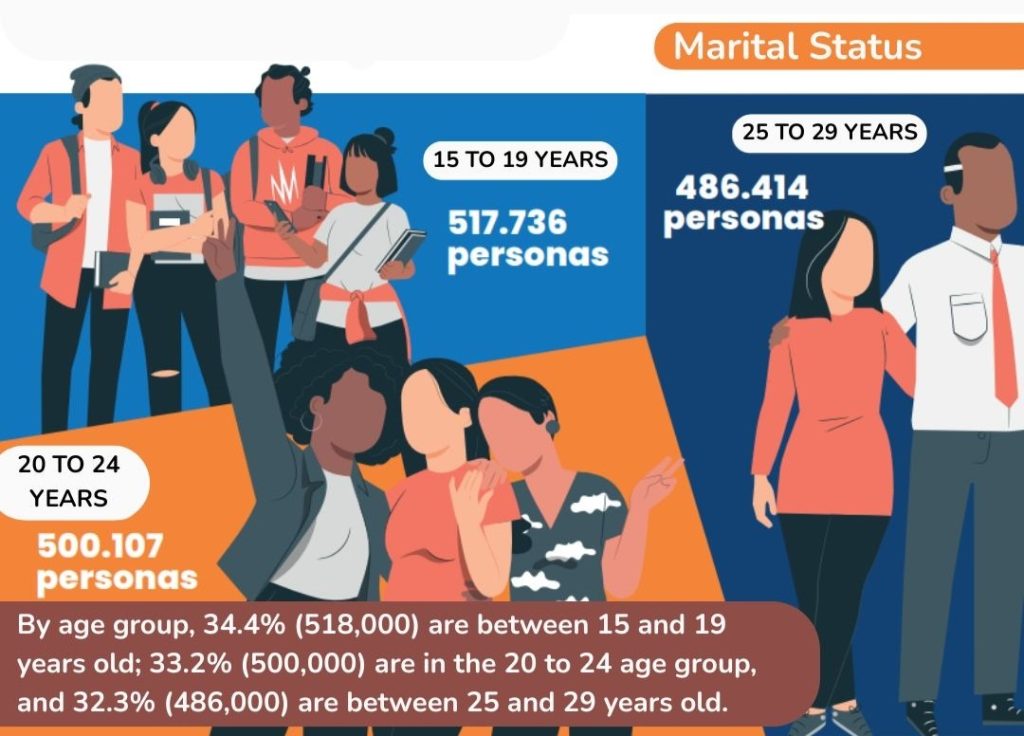Young people in Paraguay are increasingly becoming driving forces in the country on many levels. In September 2025, in observance of Paraguay celebrating Youth Day, the National Institute of Statistics (INE) released new data on the country’s youth population (individuals aged 15 to 29 years old). According to the report, Paraguay’s total population (excluding the departments of Boquerón and Alto Paraguay, indigenous communities, and collective housing) reached approximately 5.9 million in 2024.
Of these, 25.4% are young people, approximately 1.5 million individuals aged 15 to 29. The Asunción Times explores the data on their education, work, health, and marital trends shaping Paraguay’s next generation.
Providing useful information
The findings are based on the 2024 annual results of the Continuous Household Survey (EPHC). INE’s report provides detailed estimates of the youth population and their main characteristics, including age, sex, area of residence, enrolment in formal education, health, economic activity, income, marital status, and use of information and communication technology.
The aim is to provide useful information that can guide public policy and inform strategies to improve the living conditions of young Paraguayans. Young people in Paraguay are increasingly becoming driving forces behind the country’s new digital ventures, remote technology services, and community-led innovation.

How is the youth population distributed?
Of Paraguay’s total youth population of approximately 1.5 million, 745,425 are men (49.6%) and 758,832 are women (50.4%). Regarding geographical distribution, approximately 967,639 young people live in urban areas (64.3%), while 536,618 reside in rural zones (35.7%). By age groups, the breakdown is as follows:
- 15 to 19 years: 34.4% (517,736).
- 20 to 24 years: 33.2% (500,109).
- 25 to 29 years: 32.3% (486,414).
Paraguay’s youth: Education and the workforce
Slightly more than half of young people aged 15 to 24 (51.6%) attend a formal educational institution. Attendance is notably higher in urban areas (55.6%) compared to rural areas (44.5%). However, a significant group, about 188,000 young people (12.5%), are neither studying nor working. Notably, 80% of this group are women, many of whom are engaged in unpaid household, and caregiving responsibilities.
When considering economic activity, around 6 out of 10 young people are part of the employed population. The majority work in the tertiary sector (commerce and services), which employs 67.6%. This is followed by the secondary sector (industry and construction) at 20.6%, and the primary sector (agriculture) at 11%.
In terms of occupational categories, 61% are private employees, while 17% are self-employed. Yet, among the total salaried population of 15 to 29-year-olds (570,577 people), only 35.5% contribute to a retirement system. The average monthly income for employed youth is around Gs. 2,463,000 (approximately US$350). A gender gap persists as employed women earn, on average, 88% of the income earned by men.

Youth population in terms of health and marital status
Among young people, only 23.5% have valid health insurance in Paraguay. Coverage is significantly higher in urban areas (29.5%) compared to rural areas (12.9%). At the departmental level, the differences are significant: while nearly half of the youth in Asunción (45.2%) are covered, the rate drops to 33.5% in Central and 31.6% in Presidente Hayes. In contrast, access to health insurance is far more limited in departments such as San Pedro (9.5%), Caazapá (10.2%), and Canindeyú (10.3%).

In terms of marital status, most young people remain unmarried: 7 out of 10 young people between the ages of 15 and 29 are not married. On the other hand, almost 2 out of 10 young people live with a partner, either in a common-law relationship or through marriage. This shows that, for most, starting a family tends to happen later in life.
Challenges for the youth population
According to the report, the challenges facing young people are mainly concentrated in inequalities between urban and rural communities, where there is a notable difference in poverty levels and Internet access.
In 2024, 18.4% of Paraguay’s youth aged 15 to 29, around 275,067 individuals, are living in poverty, both extreme and non-extreme. Poverty rates are higher in rural areas (24.3%) compared to urban zones (15.1%). The departments with the highest incidence of monetary poverty include Concepción (37.2%), Itapúa (29.8%), Caaguazú (29.0%), and Misiones (28.3%). The Central department (10.8%) and Asunción (6.9%) recorded the lowest levels.
Internet access
Access to the internet, an essential tool for education, employment, and social participation, also shows important territorial inequalities. Of the 973,698 households with young people, 61.8% have internet access. However, the gap between urban and rural areas is visible: while 79.4% of urban households enjoy internet, only 31.4% of rural households do.
At the departmental level, Asunción leads with 85.6% of households having internet access, followed by Alto Paraná (79.4%), Central (77.3%), and Amambay (74.6%). On the other hand, Paraguarí (29.0%) and San Pedro (34.6%) record the lowest levels.
Looking ahead
Although poverty and internet access highlight the most visible differences, there are also important challenges regarding access to health services, education, and the quality of employment among Paraguay’s youth. Addressing these gaps will be essential to ensure equal opportunities and the development of this part of the population. The complete report can be accessed through INE’s official website.


